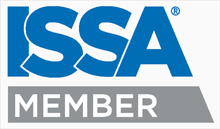What’s in My Cleaning Product?
The more you know to help you make educated, common sense decisions
If you have ever heard a sales person, so called expert, or consultant make blanket statements in regards to all cleaning chemicals are somehow dangerous, toxic, or otherwise bad, you know they are trying to sell something. Unfortunately, they are deliberately misleading you and certainly aren’t providing you with factual information.
Every day, we consume many carcinogenic compounds that are found in nature. WOW! That morning cup of java contains trace levels of 17 different naturally occurring carcinogenic compounds. The key is that these trace level compounds aren’t consumed at high enough levels to cause cancer. Don’t let anyone scare you with information that is incorrect or misleading.
So what’s really in cleaning products? This short article tells you exactly what compounds are contained in a typical cleaning product and how these items relate to other things we take for granted in our everyday lives. You see, modern cleaning products don’t create dangers, they prevent them by making our surroundings cleaner and our world safer.
Surf-act-ant: The building block of all cleaning products that stands for surface-active-agent. You might call it “soap” or detergent. If you wash your hands, your body, or shampoo your hair, you are using a surfactant. If you use make-up, or skin lotions, you are using surfactants. Laundry detergent, dish soap, car wash, etc are all examples of surfactant based systems. Surfactants are even part of our body make-up, insuring lung function and other bodily functions.
The surfactant is the chemical present in cleaning products in tiny amounts that alters the properties of water to enable it to clean. Chemists say surfactants lower the surface tension of water, we like to say a surfactant makes water wetter. Surfactants also make water and oils compatible with each other through a process called emulsification.
It’s Common Sense! When you have visibly dirty hands, running plain water does little to remove the dirt. Add a little surfactant (aka soap), and watch the dirt quickly run off your hands and down the drain.
Are surfactants harmful? Surfactants represent a broad array of chemicals, some that are naturally present in nature. Surfactants are used extensively in the food industry. In general, the right surfactants are not harmful, and quite to the contrary they make our world cleaner and safer.
Fragrance: Do you use perfume, cologne, deodorants and other fragrance based products? These same types of ingredients are used to enhance the aesthetic qualities of cleaning products. The scent after cleaning leaves a reminder the area has been cleaned and in general makes the product enjoyable to use.
Are fragrances harmful? Some fragrances do contain certain allergens. Fragrances are highly scrutinized, particularly in green certified products so that fragrances that contain allergens are not present.
Dye: These colorants are also used for aesthetics and function in cleaning products. Different cleaning products have different colors to enable easy visual identification of products.
Are Dyes Harmful? Dyes are extensively used in food and drink products. Certainly there are dyes that contain toxic, even carcinogenic compounds. You won’t find these dyes in your food, drink, or in cleaning products.
Builders: These ingredients are mineral salts that increase the cleaning power by raising the alkalinity or pH of a product. Baking soda (sodium bicarbonate) is a builder. Common builders include sodium carbonate, sodium metasilicate, and sodium hydroxide. Typically, builders are used in cleaning products when we want to clean oily soils from surfaces.
Are Builders Harmful? Some strong builders like sodium metasilicate and sodium hydroxide when used at higher levels, can make a cleaning product corrosive. Usually, these builders are reserved for very heavy duty degreasing products.
Acids: The word acid is scary to people. But we regularly consume acids, such as vinegar (acetic acid), orange juice (citric acid), coke (phosphoric acid). Acids are important in the digestion process, as our stomach contains acid to help chemically break down food. Acids are used in cleaning product to help break up mineral deposits such as lime scale and soap scum.
Are Acids Harmful? Some acids are potent and dangerous. Think battery acid. Other acids can still be corrosive, such as Hydrochloric Acid sometimes used in certain toilet bowl cleaners. Other acids are milder and well suited to cleaning products where mineral scale and soap scum need to be removed.
Bleach: This compound has been used extensively. It is a chemical called sodium hypochlorite that has powerful oxidizing power. Unfortunately, its abilities are overrated and those bleach fumes that people associate with clean can be irritating to many people. We all know the damage that bleach can do to fabrics and it is very reactive with other substances.
Is Bleach Safe? Used properly, bleach can be effective at killing germs and brightening surfaces. In most cases bleach is misused. Bleach’s disinfecting power is rapidly inactivated by soils and hard water. That is why protocol requires the surface to be first cleaned before disinfecting, creating a 2-step process. Bleach reacts with ammonia and acids to create toxic fumes that can be fatal. And of course, we all know how damaging bleach can be to fabrics.
Hydrogen Peroxide: Like bleach, hydrogen peroxide is an oxidizing agent. However, it is much safer and more far reaching practical application in cleaning.
We all need to hold individuals, publishers, consultants, and companies accountable for the statements and the claims that are made in the name of selling something. In the long run, the truth wins!


